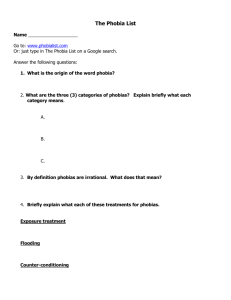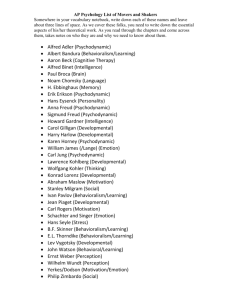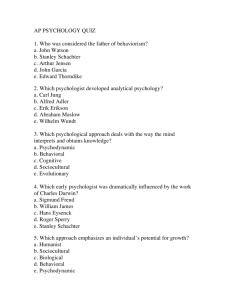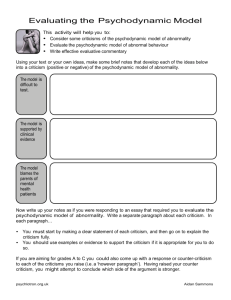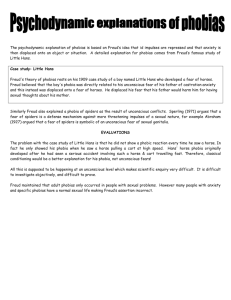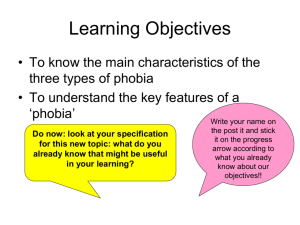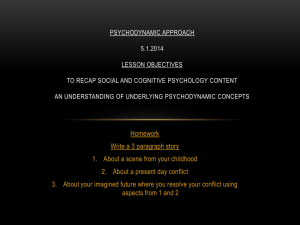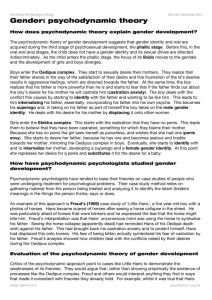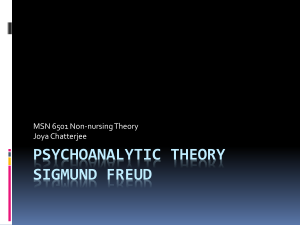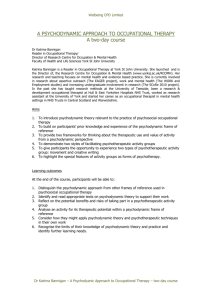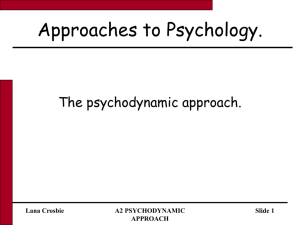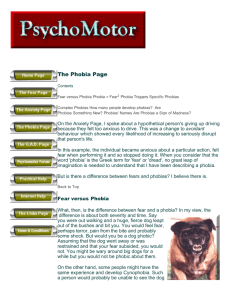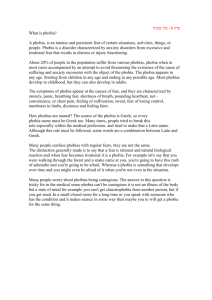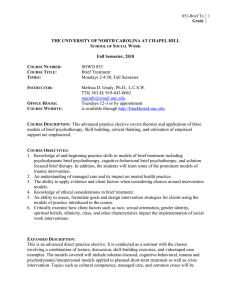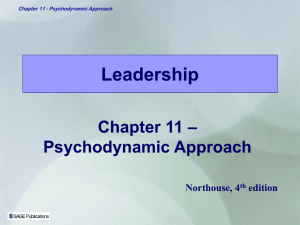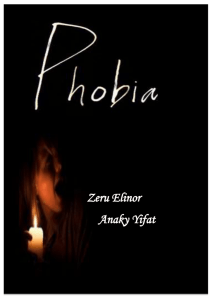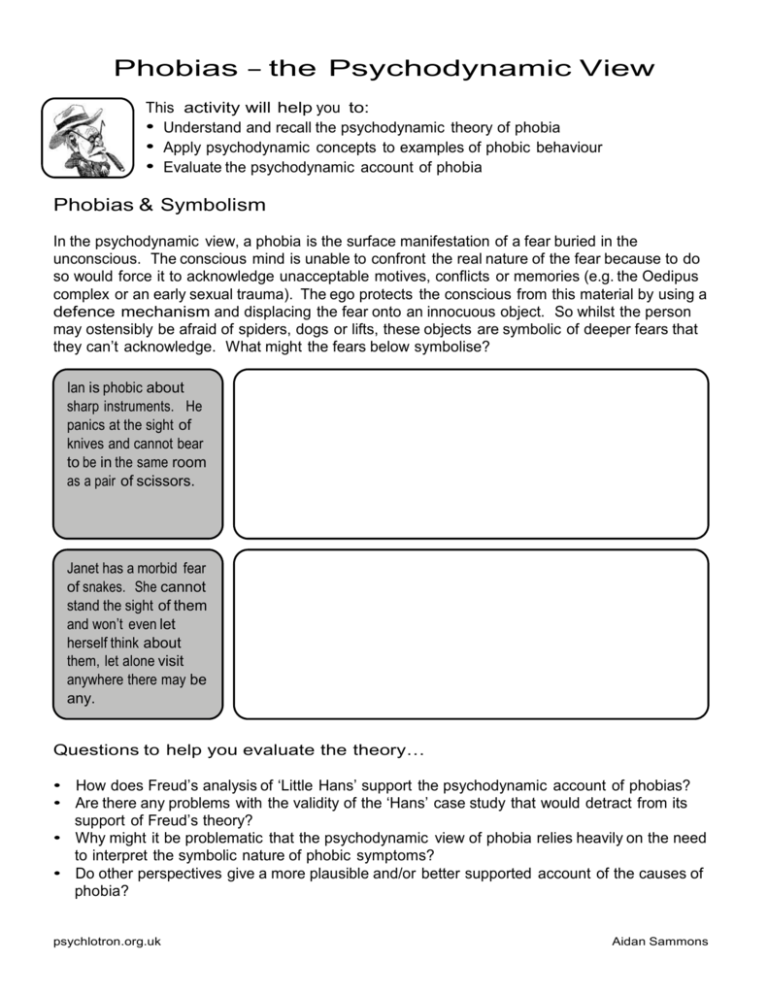
Phobias – the Psychodynamic View
This activity will help you to:
• Understand and recall the psychodynamic theory of phobia
• Apply psychodynamic concepts to examples of phobic behaviour
• Evaluate the psychodynamic account of phobia
Phobias & Symbolism
In the psychodynamic view, a phobia is the surface manifestation of a fear buried in the
unconscious. The conscious mind is unable to confront the real nature of the fear because to do
so would force it to acknowledge unacceptable motives, conflicts or memories (e.g. the Oedipus
complex or an early sexual trauma). The ego protects the conscious from this material by using a
defence mechanism and displacing the fear onto an innocuous object. So whilst the person
may ostensibly be afraid of spiders, dogs or lifts, these objects are symbolic of deeper fears that
they can’t acknowledge. What might the fears below symbolise?
Ian is phobic about
sharp instruments. He
panics at the sight of
knives and cannot bear
to be in the same room
as a pair of scissors.
Janet has a morbid fear
of snakes. She cannot
stand the sight of them
and won’t even let
herself think about
them, let alone visit
anywhere there may be
any.
Questions to help you evaluate the theory…
• How does Freud’s analysis of ‘Little Hans’ support the psychodynamic account of phobias?
• Are there any problems with the validity of the ‘Hans’ case study that would detract from its
support of Freud’s theory?
• Why might it be problematic that the psychodynamic view of phobia relies heavily on the need
to interpret the symbolic nature of phobic symptoms?
• Do other perspectives give a more plausible and/or better supported account of the causes of
phobia?
psychlotron.org.uk
Aidan Sammons

